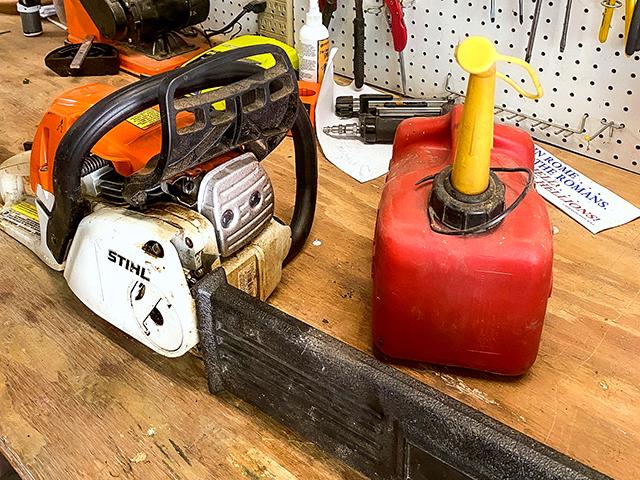Be Safe When Using Chain Saw on Farm
Use Safety Measures, Personal Protection Equipment When Using Chain Saw
OMAHA (DTN) -- Every year 36,000 people are treated in hospital emergency departments for chain saw-related injuries, according to the Center for Disease Control and Protection (CDC). Medical costs associated with these visits exceed $350 million a year.
Those who use chain saws should know how to use the tool properly before firing up the potentially dangerous machines. Proper utilization of personal protection equipment is also recommended by safety experts.
KNOW CHAIN SAW SAFETY
In an AgriSafe Network webinar, Dan Neenan, director of the National Education Center for Agricultural Safety (NECAS), spent 45 minutes discussing chain saw safety. He is also a paramedic with 30 years of experience.
When buying a chain saw, selecting one sized correctly for the person who will be using it is the first step. A smaller person should not buy a large chain saw as they will have a difficult time controlling it.
Other safety items to consider when purchasing the tool include kickback protection, chain brake, chain catcher, rear hand guards, anti-vibration system, exhaust system that keeps exhaust away from the operator, and a tool kit for properly maintaining the chain saw.
Neenan said the correct way to carry a chain saw is by hand with the bar facing backward and away from the operator. Never carry the saw over your shoulder where the chain will be next to your neck.
"Shut the chain saw off when carrying it," Neenan said.
Getting the saw prepared to be used safely involves several steps. The chain teeth should be sharpened and the chain tension should be at a proper level.
P[L1] D[0x0] M[300x250] OOP[F] ADUNIT[] T[]
If the chain is too loose, it can derail and whip back at the operator. A chain that is too tight won't bite into the wood and can also prematurely wear out the drive sprockets.
The next thing to do is ensure there are no obstacles where the operator will be cutting. Things like nails, spikes or metal wire should be removed if possible.
Also, check the chain brake, the saw's controls and make sure the saw has gas and oil before starting it.
Neenan said there are two methods for safely starting a chain saw. The operator can either brace the handle of the saw between their legs or place the saw on the ground. Reading and following the owner's manual is recommended before using a chain saw, he said.
Kickback from using a chain saw is a major safety hazard and injures many operators. This occurs when the saw bounces off what is being cut and then hits the operator.
Neenan said there are several different steps to reduce the operator's risk of kickback. They include staying alert, not using the saw if tired, exercising caution when cutting, and never sawing above shoulder height.
"Really, the best way to avoid chain saw kickback is not to cut with the kickback zone of the bar," he said.
USE CHAIN SAW PPE
Personal protection equipment (PPE) is available for chain saw operators. While there is some cost involved with purchasing PPE, there is a potential cost saving in limiting medical costs involved with injuries from using a chain saw, Neenan said.
Hearing protection is important as prolonged exposure to loud sounds can damage one's hearing. Chain saws operate at 110 decibels (dB) while OSHA's permissible exposure limit is 90 dB.
Eye protection should be impact-resistant, which is different from regular glasses or sunglasses. Safety glasses should wrap around one's head to provide the most protection possible, Neenan said.
Arm and leg protection is also important. It should be made of Kevlar to protect the limbs as most chain saw injuries occur on the arms and legs. Foot protection would be puncture-resistant boots.
Neenan said those using chain saws should have first-aid training and keep a first-aid kit close by. Replace used items before using the chain saw again.
"You should consider adding a commercially available tourniquet or stop- bleed kit to first-aid kits as well," Neenan said.
These kits might save a life, especially considering chain saws are usually used in isolated, rural areas far from medical facilities. Many rural areas have volunteer emergency services that may take some time to get out to an injured person, he said.
If you do have to call 911 for help, know where you are located. Many rural areas now have 911 addresses, which are invaluable to helping authorities know exactly where you are at.
Neenan also suggested chain saw operators should avoid working alone. He recommended, "If you do have to work by yourself, at the very least tell others where you will be."
Russ Quinn can be reached at Russ.Quinn@dtn.com.
Follow him on X, formerly known as Twitter, @RussQuinnDTN.
(c) Copyright 2024 DTN, LLC. All rights reserved.




